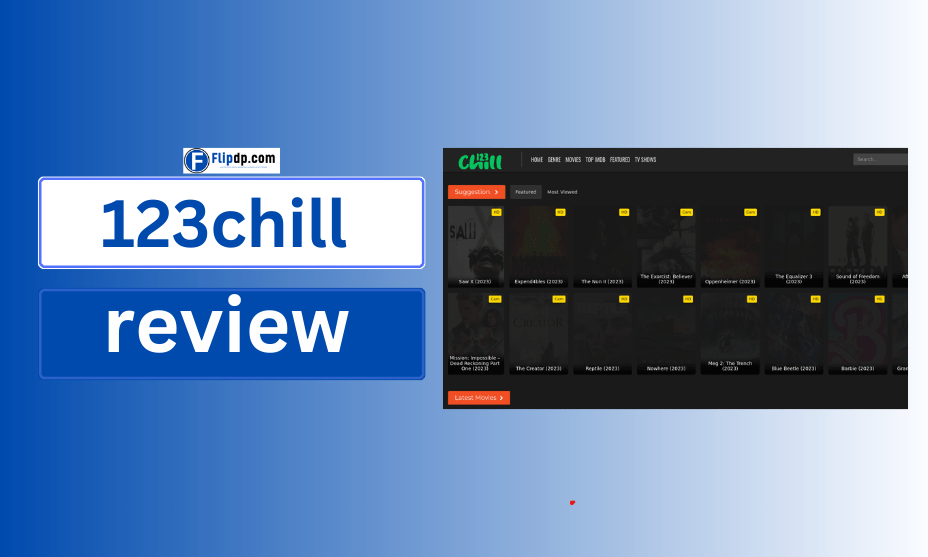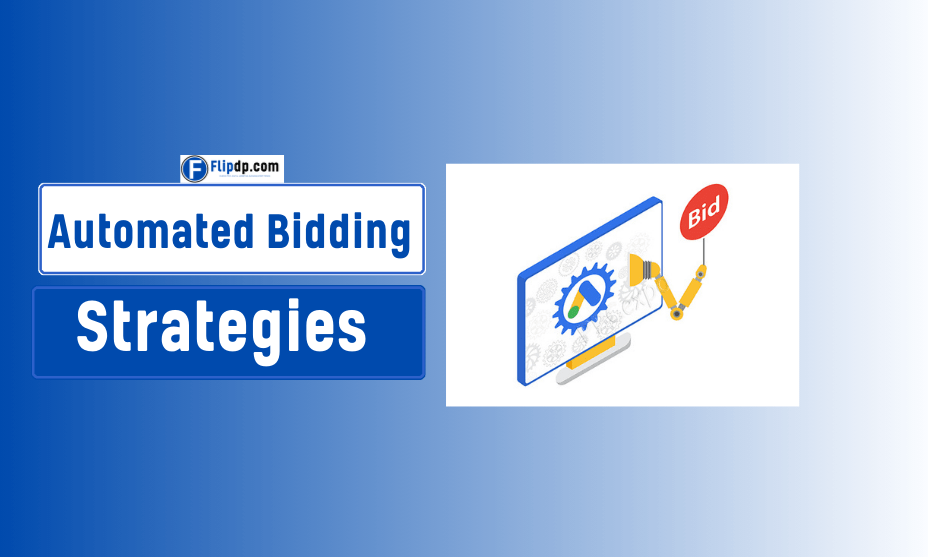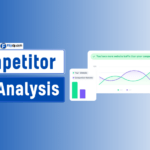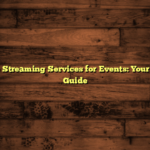In the fast-paced world of digital marketing, staying ahead of the competition is crucial. One of the most significant advancements in recent years is the rise of automated bidding strategies. These strategies leverage the power of algorithms and machine learning to optimize advertising campaigns, making them more efficient and effective. If you’re looking to enhance your marketing efforts and improve ROI, understanding automated bidding is essential. This comprehensive guide will delve into the intricacies of automated bidding strategies, exploring their benefits, types, implementation, best practices, and advanced techniques. Whether you’re a novice marketer or a seasoned professional, this guide aims to provide valuable insights into the world of automated bidding.
Understanding Automated Bidding: A Marketer’s Overview
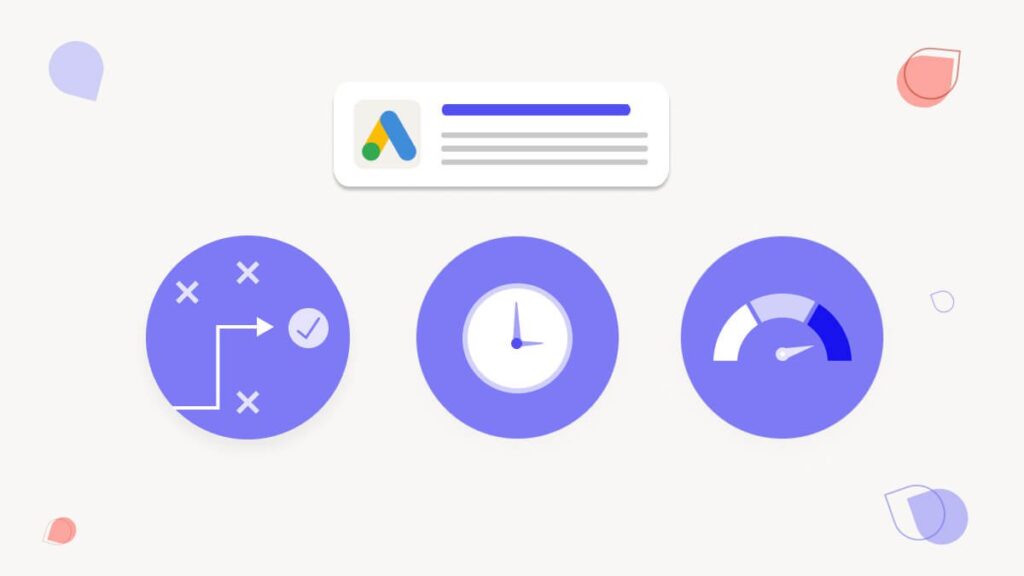
Automated bidding refers to a set of strategies used in online advertising to manage bids automatically, optimizing for specific goals such as clicks, conversions, or return on investment. Unlike traditional manual bidding, where marketers set bids for individual keywords or placements, automated bidding relies on data-driven algorithms to adjust bids in real-time based on various factors. These factors can include device type, location, time of day, and user behavior.
Key Definitions
- Bid: The maximum amount a marketer is willing to pay for a click on their ad.
- Conversion: The action taken by a user after clicking on an ad, such as making a purchase or filling out a form.
- Return on Investment (ROI): A measure of the profitability of an investment, calculated as the ratio of net profit to the cost of the investment.
By automating the bidding process, marketers can save time, reduce errors, and enhance the performance of their campaigns. Automated bidding strategies are particularly beneficial for large-scale campaigns where managing bids manually can be cumbersome and inefficient.
Why Automated Bidding Matters in Digital Marketing

The digital marketing landscape is continuously evolving, and with it, consumer behavior and technology. Automated bidding has emerged as a critical tool for marketers for several reasons:
- Efficiency: Automated bidding eliminates the need for constant bid adjustments, allowing marketers to focus on strategy and creative aspects of their campaigns.
- Real-Time Optimization: Algorithms analyze data in real-time, adjusting bids based on performance and competition. This responsiveness can lead to improved ad placement and lower costs.
- Data-Driven Decisions: Automated bidding leverages vast amounts of data to make informed bidding decisions, improving accuracy and effectiveness.
- Increased Scalability: As campaigns grow, automated bidding can scale without additional workload, enabling marketers to manage larger budgets and more complex campaigns.
Types of Automated Bidding Strategies
Automated bidding strategies can be broadly categorized into two types: Smart Bidding and Maximize Clicks. Let’s explore these strategies in detail.
The Different Types of Automated Bidding Strategies
- Smart Bidding: A subset of automated bidding, Smart Bidding uses machine learning to optimize conversions or conversion value in each auction. It includes strategies such as:
- Target CPA (Cost Per Acquisition): Sets bids to help get as many conversions as possible at the target cost per acquisition.
- Target ROAS (Return on Ad Spend): Sets bids to maximize the conversion value while achieving the target return on ad spend.
- Maximize Conversions: Automatically sets bids to get the most conversions for the campaign within the budget.
- Maximize Clicks: This strategy aims to get as many clicks as possible within a specified budget. It’s a good option for marketers looking to increase website traffic quickly without focusing on conversions immediately.
Exploring Smart Bidding: What You Need to Know
Smart Bidding strategies are designed to leverage Google’s machine learning capabilities, analyzing historical data and real-time signals to optimize bids for every auction. For instance, if a user is searching for a product on a mobile device during peak hours, the algorithm might increase the bid for that particular search, anticipating a higher likelihood of conversion.
Benefits of Smart Bidding
- Enhanced Performance: Smart Bidding can improve campaign performance by dynamically adjusting bids based on multiple factors, including user behavior and competitive landscape.
- Automation with Control: Marketers can set specific goals, such as target CPA or ROAS, while allowing the algorithm to handle bid adjustments.
Cost-per-Acquisition (CPA) Bidding: A Deep Dive
Cost-per-acquisition (CPA) bidding is a popular automated bidding strategy aimed at maximizing conversions at a specific cost. Marketers set a target CPA, and the algorithm adjusts bids to achieve as many conversions as possible while staying within that target.
How CPA Bidding Works
- Setting Your Target CPA: Determine the average amount you’re willing to pay for a conversion. For example, if your product has a profit margin of $50, you might set a target CPA of $20.
- Real-Time Adjustments: The algorithm will automatically adjust bids based on the likelihood of conversion for each auction. If a user is more likely to convert based on historical data, the algorithm may increase the bid for that auction.
- Performance Tracking: Regularly monitor performance against your target CPA to ensure the strategy is effective. Adjust your target CPA as necessary based on results.
Advantages of CPA Bidding
- Cost Control: Helps maintain a consistent cost per conversion, making budget forecasting easier.
- Higher Conversion Rates: By optimizing bids based on conversion likelihood, CPA bidding can lead to increased conversion rates.
Maximize Clicks: The Automated Bidding Approach
Maximize Clicks is a straightforward automated bidding strategy aimed at driving traffic to your website. This strategy is particularly useful for campaigns focused on brand awareness or when launching a new product.
How Maximize Clicks Works
- Setting a Daily Budget: Marketers set a daily budget, and the algorithm will optimize bids to achieve as many clicks as possible within that budget.
- Bid Adjustments: The algorithm automatically adjusts bids for each auction based on factors like device, location, and time of day, ensuring that your ads are competitive.
When to Use Maximize Clicks
- Brand Awareness Campaigns: When the goal is to increase visibility and traffic rather than immediate conversions.
- New Product Launches: To generate interest and traffic for a newly launched product or service.
Target Return on Ad Spend (ROAS): How It Works
Target ROAS is another Smart Bidding strategy that focuses on maximizing conversion value while achieving a specific return on ad spend. This strategy is ideal for marketers who prioritize revenue generation over the number of conversions.
How Target ROAS Works
- Setting Your Target ROAS: Define the target return you want from your ad spend. For instance, if you spend $100 on ads, and you want to earn $500 in return, your target ROAS would be 5:1.
- Bid Optimization: The algorithm adjusts bids to maximize the conversion value, taking into account various factors such as user behavior and auction dynamics.
Benefits of Target ROAS
- Revenue Focus: Helps ensure that marketing efforts contribute to overall revenue goals.
- Dynamic Adjustments: The algorithm continuously learns and adapts, optimizing bids to improve performance.
Benefits of Automated Bidding
The advantages of implementing automated bidding strategies in your digital marketing campaigns are manifold. Here’s a closer look at some of the key benefits.
Why Choose Automated Bidding? Key Benefits for Marketers
- Time Savings: Automating the bidding process frees up time for marketers to focus on other critical aspects of their campaigns, such as content creation and audience targeting.
- Improved Performance: Automated bidding strategies are designed to optimize campaigns based on real-time data, resulting in better overall performance and increased ROI.
- Data Utilization: These strategies leverage vast amounts of data, enabling marketers to make informed decisions based on performance trends and user behavior.
- Scalability: Automated bidding allows marketers to manage larger campaigns and budgets effectively, adapting to changes in demand and competition without the need for manual adjustments.
Enhancing Campaign Performance with Automated Bidding
Automated bidding strategies can significantly enhance campaign performance by enabling more precise targeting and optimization. For instance, campaigns utilizing Smart Bidding often see improvements in conversion rates and lower costs per acquisition.
Cost Efficiency: How Automated Bidding Saves You Money
Automated bidding can lead to significant cost savings for marketers. By optimizing bids in real-time, these strategies can help reduce wasted ad spend and improve overall budget efficiency. This cost-effectiveness allows marketers to allocate resources more strategically, ensuring that funds are directed toward the highest-performing areas of their campaigns.
Cost-Saving Examples
- Dynamic Bid Adjustments: For example, if a product is performing exceptionally well during specific hours, automated bidding can allocate more budget during those peak times, maximizing returns and minimizing costs during off-peak times.
Implementation of Automated Bidding
Implementing automated bidding strategies can seem daunting, but with the right approach, it can be a straightforward process. Here’s how to get started.
How to Implement Automated Bidding Strategies in Your Campaigns
- Identify Your Goals: Clearly define your campaign objectives, whether it’s maximizing clicks, conversions, or ROI. Understanding your goals will help you choose the right automated bidding strategy.
- Select the Right Strategy: Based on your goals, choose the automated bidding strategy that aligns with your objectives, such as Target CPA, Target ROAS, or Maximize Clicks.
- Set Up Conversion Tracking: Ensure that conversion tracking is properly set up to measure the success of your campaigns. This data is crucial for optimizing automated bidding strategies.
- Monitor and Adjust: After implementing your chosen strategy, continuously monitor performance and make adjustments as needed. This may include refining your target CPA or ROAS based on results or analyzing your campaigns to identify areas for improvement.
Setting Up Your First Automated Bidding Strategy: A Step-by-Step Guide
- Access Your Advertising Platform: Log into your Google Ads or other advertising account where you wish to implement automated bidding.
- Select Your Campaign: Navigate to the campaign you want to optimize. If you’re starting a new campaign, choose the appropriate settings before moving on to bidding strategies.
- Choose Your Bidding Strategy:
- For Smart Bidding: Select options like Target CPA, Target ROAS, or Maximize Conversions.
- For Maximize Clicks: Select the Maximize Clicks strategy, and set your daily budget.
- Define Your Goals: Specify your objectives, such as the target CPA or ROAS. Ensure these goals are realistic and align with your overall marketing strategy.
- Enable Conversion Tracking: If you haven’t done so already, set up conversion tracking. This step is crucial for measuring the effectiveness of your automated bidding.
- Launch and Monitor: Once everything is set up, launch your campaign. Regularly monitor performance metrics to ensure that the automated bidding strategy is delivering the desired results.
- Adjust as Necessary: Based on performance data, you may need to tweak your strategy, such as adjusting your target CPA or experimenting with different bidding options.
Best Practices
To maximize the effectiveness of automated bidding strategies, marketers should adhere to best practices that optimize performance and prevent common pitfalls.
Best Practices for Maximizing Automated Bidding Success
- Start with a Clear Goal: Ensure your objectives are specific, measurable, achievable, relevant, and time-bound (SMART). This clarity helps guide your bidding strategy and performance evaluation.
- Use Historical Data: Leverage historical performance data to inform your automated bidding settings. This data can provide insights into what has worked in the past and help set realistic targets.
- Segment Your Campaigns: Consider segmenting campaigns based on different objectives, audience types, or products. This approach allows for more tailored bidding strategies and improved performance.
- Test Different Strategies: Don’t hesitate to experiment with various automated bidding strategies to find the best fit for your campaigns. Continuous testing can yield valuable insights and drive better results.
- Regularly Review and Adjust Targets: Automated bidding can be dynamic, so it’s essential to regularly review your targets and make adjustments as necessary based on campaign performance and market conditions.
Common Mistakes to Avoid in Automated Bidding Strategies
- Ignoring Conversion Tracking: Without proper tracking, you won’t have accurate data to guide your automated bidding strategies. Ensure that conversion tracking is in place from the start.
- Setting Unrealistic Goals: Setting overly ambitious CPA or ROAS targets can lead to poor performance and wasted budget. Ensure that your goals are aligned with historical performance data.
- Neglecting Regular Monitoring: While automated bidding reduces the need for manual adjustments, neglecting to monitor campaigns regularly can lead to missed opportunities for optimization.
- Not Segmenting Campaigns: Failing to segment campaigns can dilute the effectiveness of your bidding strategies. Different campaigns may require tailored approaches based on their unique goals and target audiences.
Optimizing Your Campaigns: Tips for Effective Automated Bidding
To enhance the performance of your automated bidding strategies, consider the following optimization tips:
- Utilize Ad Extensions: Implement ad extensions to provide additional information and increase click-through rates. This can positively impact the performance of your automated bidding strategies.
- Optimize Landing Pages: Ensure that landing pages are optimized for conversions. A well-designed landing page can significantly influence the effectiveness of your automated bidding strategy.
- Focus on Quality Score: Improve your ad quality scores by optimizing ad relevance, expected click-through rates, and landing page experience. A higher quality score can lead to lower costs and better ad placements.
- Leverage Audience Targeting: Use audience targeting options to reach specific segments of your audience. This precision can enhance the effectiveness of your automated bidding strategies.
Performance Measurement
Measuring the success of your automated bidding strategies is critical to understanding their effectiveness and making informed adjustments.
Measuring Success: Key Metrics for Automated Bidding Strategies
- Conversion Rate: The percentage of clicks that result in conversions. A higher conversion rate indicates that your automated bidding strategy is effectively targeting the right audience.
- Cost Per Acquisition (CPA): The average cost incurred to acquire a customer. Monitoring CPA helps evaluate the cost-effectiveness of your campaigns.
- Return on Ad Spend (ROAS): This metric measures the revenue generated for every dollar spent on advertising. A higher ROAS indicates better campaign performance.
- Click-Through Rate (CTR): The percentage of ad impressions that result in clicks. A higher CTR typically indicates that your ads are engaging and relevant to the target audience.
- Impression Share: The percentage of impressions your ads receive compared to the total number of impressions they could receive. A higher impression share indicates strong visibility in the market.
Analyzing Your Automated Bidding Results: What to Look For
- Trends Over Time: Analyze performance data over time to identify trends. Look for patterns in conversion rates, CPA, and ROAS that can inform future strategies.
- Segmentation Analysis: Break down performance data by segments, such as device type, location, or demographics. This analysis can reveal insights about your audience and help refine targeting strategies.
- Budget Utilization: Monitor how effectively your budget is being utilized across different campaigns. This can help identify areas for optimization or reallocation of resources.
Advanced Strategies
As marketers become more comfortable with automated bidding, they can explore advanced strategies to further enhance their campaigns.
Advanced Automated Bidding Strategies for Experienced Marketers
- Combining Automated Bidding with Manual Adjustments: For advanced users, combining automated bidding with manual adjustments can yield superior results. While the algorithm handles real-time bid adjustments, marketers can apply their insights and make targeted adjustments based on performance data.
- Leveraging Seasonality and Trends: Understand seasonal trends and adjust bidding strategies accordingly. For example, if your product sees increased demand during the holidays, consider increasing your budget and adjusting bids to capitalize on this demand.
- Implementing Remarketing Strategies: Use automated bidding in conjunction with remarketing strategies to target users who have previously interacted with your brand. This can improve conversion rates by re-engaging potential customers.
Combining Automated Bidding with Manual Adjustments: Best of Both Worlds
A hybrid approach allows marketers to maintain control over their campaigns while benefiting from the efficiency of automated bidding. Here’s how to implement this strategy effectively:
- Identify Key Areas for Manual Control: Determine which aspects of your campaign require manual adjustments. This could include high-value keywords or specific ad groups that require special attention.
- Set Up Bid Adjustments: Utilize bid adjustments to refine automated bidding strategies based on your insights. For example, if you notice that a particular audience segment converts better, you can increase bids for that segment manually.
- Continuous Monitoring and Optimization: Regularly review campaign performance, making adjustments to both automated and manual settings as needed. This combination approach allows for a more tailored strategy that can adapt to changing market conditions.
Case Studies and Examples
Real-world examples of successful automated bidding strategies can provide valuable insights and inspiration for marketers looking to enhance their campaigns.
Real-World Examples of Successful Automated Bidding Strategies
- E-commerce Brand Success with Target ROAS: An online retailer implemented Target ROAS bidding for their holiday campaign. By analyzing historical performance data, they set a target ROAS of 6:1. The automated bidding algorithm dynamically adjusted bids, resulting in a 30% increase in sales compared to previous campaigns.
- Lead Generation with Target CPA: A B2B company focused on lead generation adopted a Target CPA bidding strategy. By setting a target CPA of $50, they optimized their campaigns for conversion, ultimately achieving a 50% reduction in acquisition costs while increasing the volume of qualified leads.
- Traffic Boost through Maximize Clicks: A travel agency launching a new package used the Maximize Clicks strategy to generate initial traffic. By allocating a daily budget of $500, they increased website visits by 200% in the first month, providing a solid foundation for future conversion-focused campaigns.
Case Studies: Brands That Excelled with Automated Bidding
- Brand A: Driving E-commerce Sales: After transitioning to Smart Bidding strategies, Brand A saw a 40% increase in conversions and a significant reduction in CPA. By utilizing machine learning to optimize bids based on user behavior and other signals, they achieved a substantial uplift in sales during peak shopping seasons.
- Brand B: Improving Local Business Visibility: A local restaurant implemented Maximize Clicks to increase online reservations. Within three months, they doubled their online bookings and improved brand visibility in their area, thanks to the targeted traffic driven by their ads.
Conclusion
Automated bidding strategies have revolutionized digital marketing by providing marketers with powerful tools to optimize their campaigns effectively. By understanding the various types of automated bidding, implementing best practices, and leveraging advanced strategies, marketers can enhance their campaign performance and achieve their business objectives.
FAQs,Automated Bidding Strategies
1. What are Automated Bidding Strategies?
Automated bidding strategies use machine learning and algorithms to optimize bids for ads in real-time, ensuring they align with specific campaign goals, such as maximizing conversions, clicks, or impression share.
2. How do Automated Bidding Strategies work?
Automated bidding strategies analyze a wide range of signals, such as device, location, and time of day, to adjust bids dynamically in order to achieve the best possible results for your specific objectives.
3. What are the main types of Automated Bidding Strategies?
There are several types of automated bidding strategies, including:
Target CPA (Cost-Per-Acquisition)
Target ROAS (Return on Ad Spend)
Maximize Clicks
Maximize Conversions
Enhanced CPC (Cost-Per-Click)
4. How is Automated Bidding different from Manual Bidding?
In manual bidding, advertisers set individual bids for keywords or ad placements, while automated bidding uses algorithms to automatically adjust bids based on real-time data and campaign performance goals.


